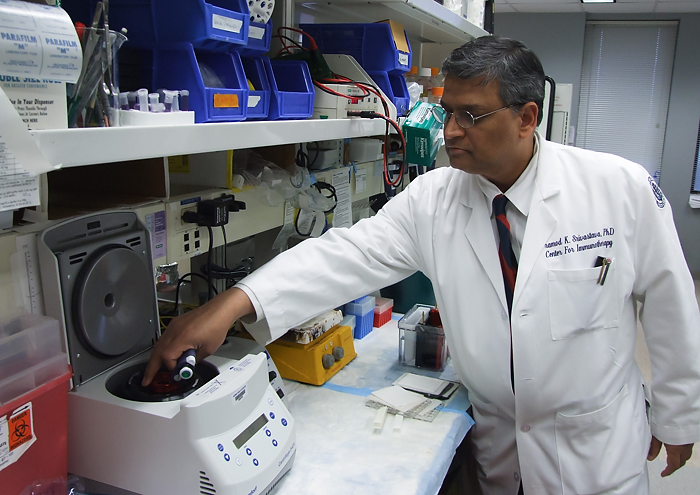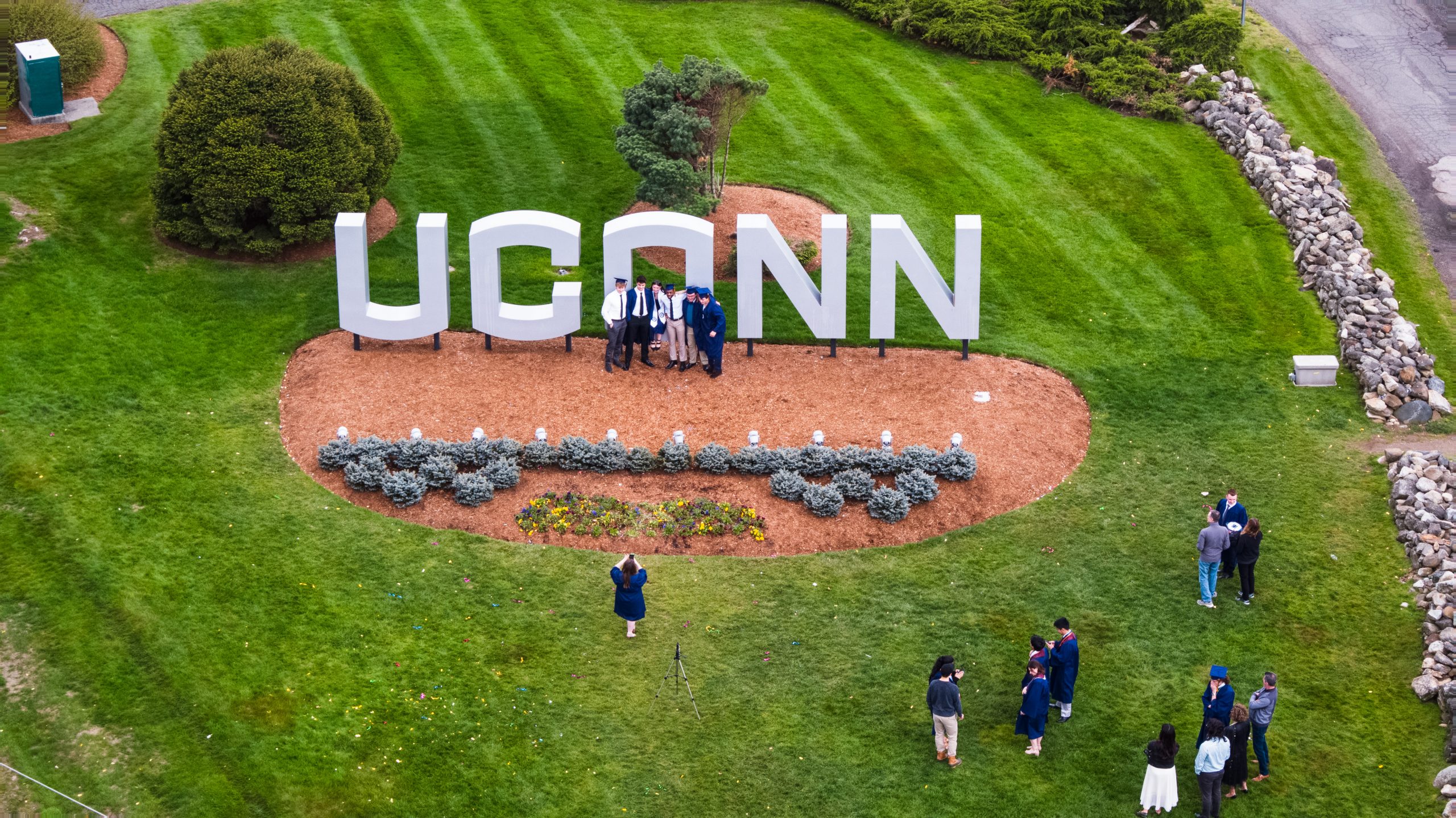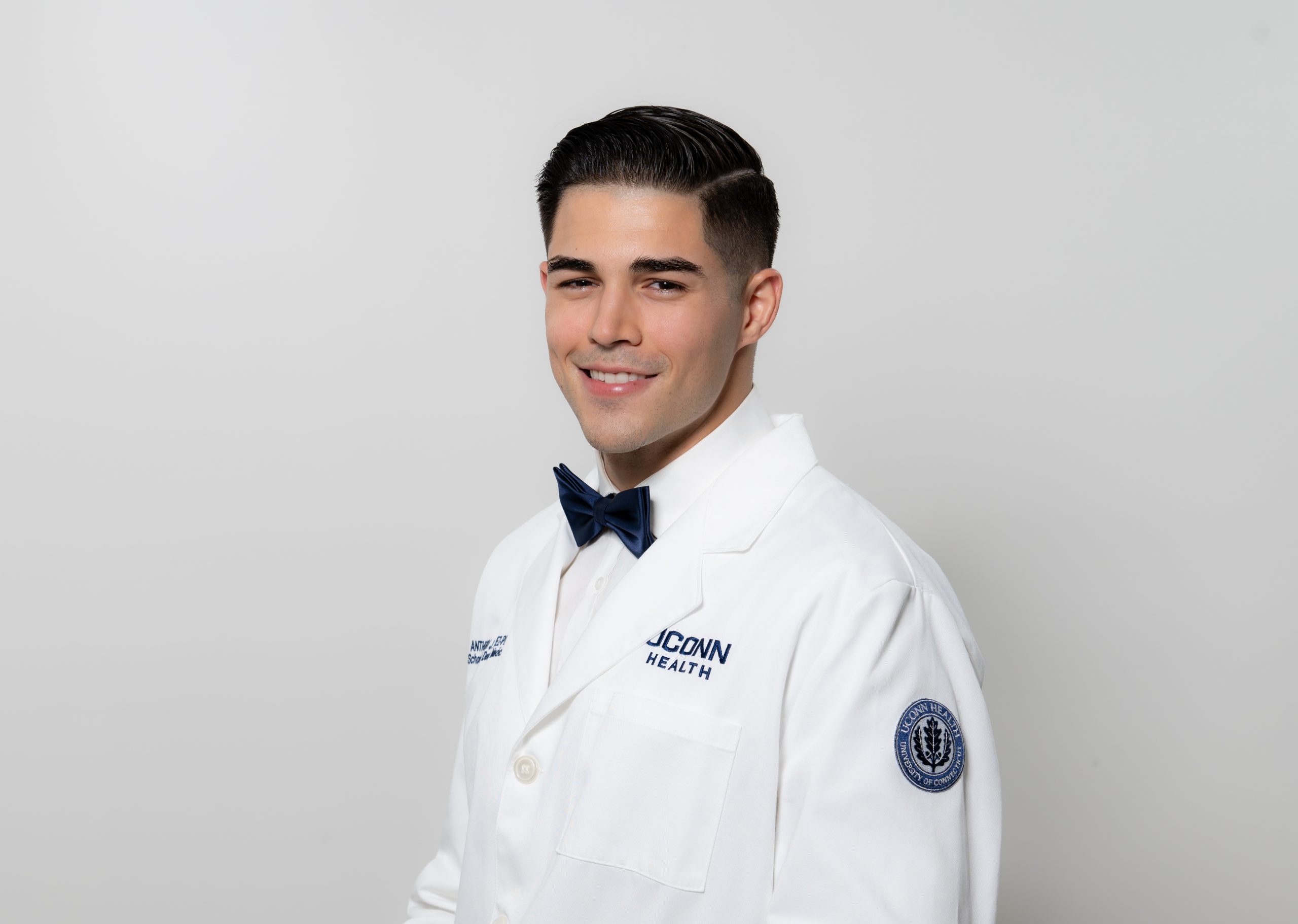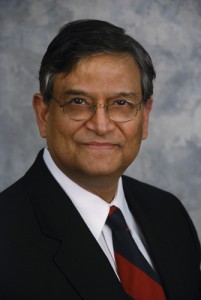
The scientific work of a University of Connecticut Health Center doctor has led to the creation of a vaccine that has shown promising results in fighting a deadly form of brain cancer.
A preliminary analysis of a multi-center, single-arm, phase 2 clinical trial of the vaccine plus chemoradiation in patients with glioblastoma multiforme (GBM) showed a 146 percent increase in progression-free survival and a 60 percent increase in overall survival compared to those who receive chemoradiation alone.
“Many years ago I had made some observations and developed some ideas that led to a method that potentially may be used to treat any type of cancer,” says Dr. Pramod Srivastava, who serves as director of the Carole and Ray Neag Comprehensive Cancer Center and holds the Northeast Utilities Chair in Experimental Oncology. “It is different from other treatments in its individuality – we take tumor tissue after surgery and extract the vaccine from it. Because the drug is made from each patient’s tumor for that specific patient, it is highly individualized.”
The vaccine used in the trial is based on the role of heat shock protein (HSP) in immune response, an area pioneered by Srivastava and his trainees. Heat shock proteins are cell components present in all living organisms that play an essential role in helping the immune system recognize and destroy diseased cells. Researchers believe that the HSPs can be used for immunization against a wide array of diseases, including cancer. Recently, this approach has shown positive results in the treatment of genital herpes, and a Phase 2 study has completed enrollment.
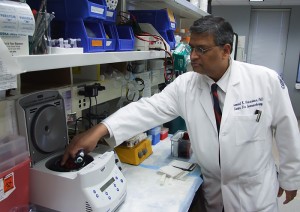
A number of clinical trials have come from the HSP approach. A worldwide-randomized phase 3 trial of an HSP-based vaccine (vitespen) to treat locally advanced kidney cancer yielded data strong enough for the Russian Ministry of Health to be the first to approve it, and it has been used there since 2008. This was the first therapeutic cancer vaccine to be approved for regular use anywhere in the world. The U.S. Food and Drug Administration (FDA) required one more confirmatory trial before it could be approved in this country, but it was not done in kidney cancer because of a lack of time and funding.
The early results of the GBM trial have shown “some pretty impressive numbers for glioblastoma,” Srivastava says. “This is a very bad disease with no good treatments available. Even though many studies have been done, nothing has actually worked very well in the past.”
Cancer vaccines offer treatment without the toxicity that comes with other treatment methods. The HSP-based cancer vaccines contain a precise “fingerprint” of a person’s particular cancer that is designed to reprogram the body’s immune system to target only cells with this fingerprint, which reduces the risk of damage to healthy cells.
There are still challenges to overcome in the development of cancer vaccines, however, such as selecting and delivering the appropriate antigens (a substance that induces an immune response in the body) and counteracting cancer’s suppression of the immune system.
The Cancer Therapy Evaluation Program (CTEP) of the National Cancer Institute (NCI) is supporting a study of the GBM vaccine in a large randomized phase 2 trial, sponsored by the Alliance for Clinical Trials in Oncology, a National Cancer Institute Cooperative Group formed by the merger of the American College of Surgeons Oncology Group, Cancer and Leukemia Group B, and the North Central Cancer treatment Group.
“In light of the striking data from the (smaller) phase 2 trial, the CTEP trial is expected to enroll at about 50 centers in the country,” Srivastava says. “It will be testing my vaccine or Avastin, which is a current treatment for glioblastomas in the U.S., or a combination of the two. It is the largest NCI-funded trial ever done in this patient population, and the largest trial combining Avastin with a vaccine.”
Results of the CTEP study will be known in about four years. The study is led by Dr. Andrew Parsa of Northwestern University, and Srivastava is co-chair of the trial’s Correlative Study Group. Although the UConn Health Center will not be a site for this study because it does not have a large enough glioblastoma patient population, Srivastava is the inventor on the many patents for the science that is the basis of the trial; these patents are owned by the academic institutions where he has worked, including UConn.
Srivastava began his academic career as a paleontologist with little interest in medicine. His focus changed due to sheer circumstance. “I used to sign up to use this scanning electron microscope to look at my fossils,” he recalls. “The person who was often using it ahead of me was studying cancer cells. I would stand behind her and notice that the cancer cells looked unordered, chaotic. Normal liver cells, by contrast, looked so beautiful and ordered, like cobblestones.”
Struck by the difference, Srivastava spoke up. “I said that if you look at the proteins on the cancer cells and normal cells, the differences might provide a clue to treatment. She told me to go back to my fossils. So I thought I’d teach myself to look at the proteins. I started this work thinking that I’d go back to my fossil studies one day. But this work has been so absorbing for me that I’ve yet to make it back.”
Follow the UConn Health Center on Facebook, Twitter and YouTube.
